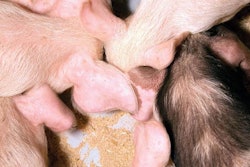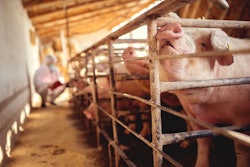
In Germany, ASF has been detected for the first time in wild boar in a second district of Saxony
As African swine fever (ASF) makes an unwelcome return to two regions of Russia, the virus has been detected at two large commercial farms, according to the latest official notifications to the World Organisation for Animal Health (OIE).
In the Central federal district, five pigs that died in the first week of October tested positive for the ASF virus. They were part of a herd of more than 13,800 belonging to Miratorg in Belgorod oblast. This is the second farm belonging to this company to be affected by the disease, and the fourth farm in the area to be infected since September. Around 52,000 pigs have been directly impacted in this oblast so far.
After a brief hiatus, ASF has been reported in Kaluga oblast, which is also part of the Central federal district. Here, too, the disease has hit a commercial operation also with around 13,800 pigs. This is identified in the official report as part of Rassvet Plus Yug.
Also in Russia’s Central district is Ivanovo oblast, where the last ASF cases were detected three years ago. This month, pigs tested positive for the virus in a backyard herd of 91 pigs.
There have been no new outbreaks in Yaroslavl oblast, but authorities have reported to the OIE that additional animals have been involved and culled in relation to earlier outbreaks in this region. They bring the total for this oblast to 846 pigs in outbreaks confirmed between May and July.
Disease situation in Russia’s Volga federal district
In the Volga district, a new outbreak has been reported in a small backyard herd in Perm krai.
The nation’s animal health agency has declared to the OIE the ASF situation in Saratov oblast in the same district “resolved.” This came after four confirmed outbreaks in backyard herds in July and August. The last of these outbreaks was considered ended on October 4.
ASF detected in 35 more Romanian pig herds
Over the past week, the nation’s animal health agency has registered with the OIE 17 new outbreaks of ASF in the south of the country. One of these units was a large commercial farm with around 18,700 pigs, while the others were described as “backyards,” each with between two and 27 animals.
In central Romania, a total of 445 pigs were involved in nine new outbreaks, including one herd of around 400 animals. There were six new outbreaks in the east of the country, and three in the southeast — all in non-commercial herds.
2 new outbreaks in Poland’s pig population
Over the past week, ASF has been confirmed in two more pig farms, according to the nation’s chief veterinary office.
Affected were a farm with 92 animals in the northeastern province of Warmia-Masuria, and another in central-western Greater Poland (Wielkopolskie) with 10 pigs.
These bring to 112 the number of outbreaks among domestic pigs in the country so far this year. The number of animals directly impacted is now more than 39,600.
ASF situation ‘resolved’ in Ukrainian oblast
In the southeastern oblast of Zaporizhzhia, the disease event has been closed, according to a recent notification to the OIE.
There was one outbreak in a backyard herd of 10 pigs in this region at the end of August. No new cases have been detected since that time, according to the Ukrainian veterinary authority.
Germany: First wild boar tests positive in second Saxony district
The number of wild boar that have tested positive for the ASF virus in Germany stands at 2,406. This total comprises 1,857 cases in the eastern state of Brandenburg (as of October 15), and 549 in neighboring Saxony (as of October 13).
For the first time, an infected animal has been found in a second district in Saxony, namely Meißen. All previous cases had been located in Görlitz. However, the animal was found 60 km outside the restricted zone last week as a result of extended monitoring measures, according to Germany’s federal agriculture ministry. These measures aim to prevent the westward spread of ASF, and its eradication as soon as possible.
In response to the finding, authorities in Saxony report that ASF exclusion and restricted zones have been extended. They now cover more of the district of Görlitz, as well as neighboring Bautzen and Meißen, and the state capital, Dresden.
The latest cases in Brandenburg were within the previously affected seven districts. The Meißen district of Saxony borders Brandenburg.
Since ASF was first detected in Germany in September 2020, the virus has been detected in wild boar only in Brandenburg and Saxony. Among Germany’s domestic pig population, there have been just three confirmed outbreaks so far. All were in Brandenburg during July.
Situation in wild boar elsewhere in Europe
In addition to Germany, five other European states have registered with the OIE new ASF cases in their respective wild boar population.
Numbers of infected animals were 48 in Poland, 36 in Russia, seven in Latvia, and four each in Hungary and Romania.
Cases in Russia include 35 wild boar found in one group in Vladimir oblast in the Central federal district, and one in Novgorod (Northwestern district).
So far this year, 2,218 cases have been identified in Poland, according to the chief veterinary office.
Three further European states have registered new ASF outbreaks in wild boar through the Animal Disease Information System of the European Commission. Over the period October 7-13, reporting new cases were Estonia (4 outbreaks), Lithuania (2) and Slovakia (10).
View our continuing coverage of the global African swine fever situation.
















